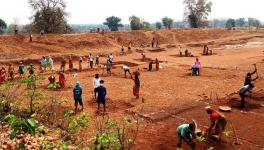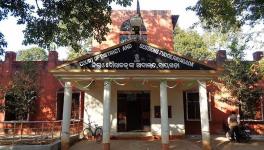Caste Stranglehold in Agriculture
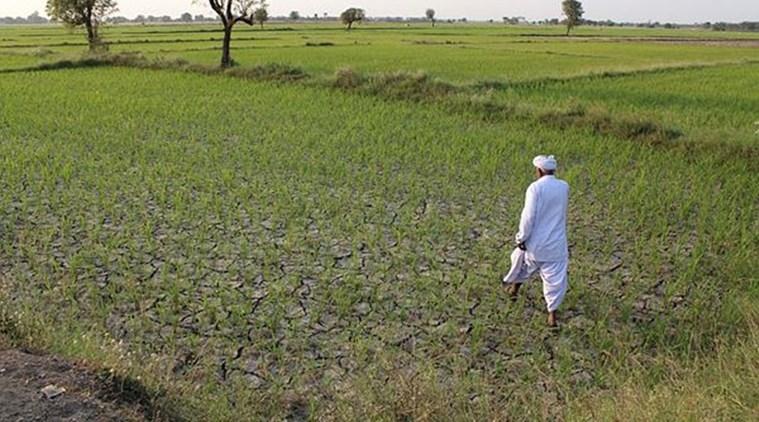
India has 1571.4 lakh hectares (157 million ha) of area that is operated for agricultural use. This is fragmented into a staggering number of holdings – some 1457.3 lakh (146 million) operational land holdings. But the defining feature of this is the deadly stranglehold of caste that pervades the ownership of this land.
As the newly released report of the Agricultural Census (done in 2015-16) shows, Dalits (or Scheduled Castes) operate just short of 9% of this vast land. Their population share in rural areas is 18.5% as per the 2011 Census. As shown in other surveys and the Census, most of Dalits are in fact landless.
The Adivasi communities (or Scheduled Tribes) operate about 11% of the land which is equivalent to their population share in rural areas. But most of this land is in difficult remote terrain, not reached by irrigation or even all-weather roads. It includes forest lands operated by communities for subsistence farming.
The balance of about 80% of the agricultural land is operated by ‘other’ castes which may be the so called upper castes or ‘other backward classes’ (OBCs).
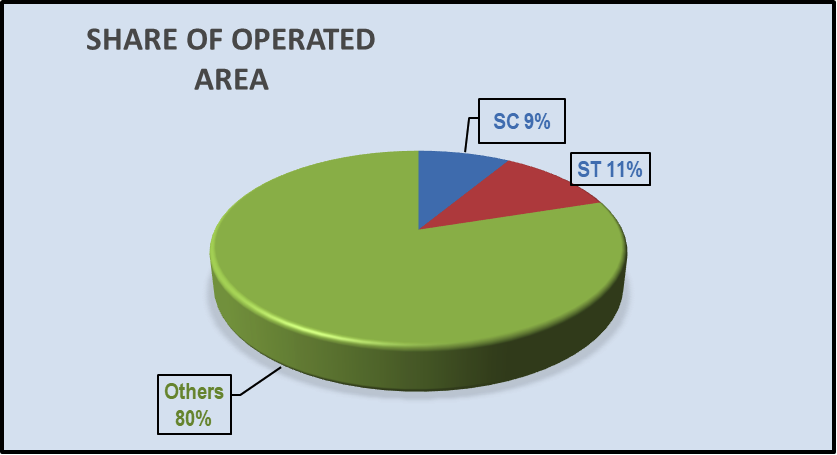
This striking disparity and dispossession is a consequence of centuries of oppressive practices where Dalit cultivators would mostly work as serfs or slaves on the lands of elite property owners and later for wages. The continuation of this system – land reforms having miserably failed – has only perpetuated the subservient status of Dalits.
There is another aspect of the land possession system in India that strengthens this caste-based exploitation. This is represented in the graphic below which shows the land holding sizes operated by different communities.
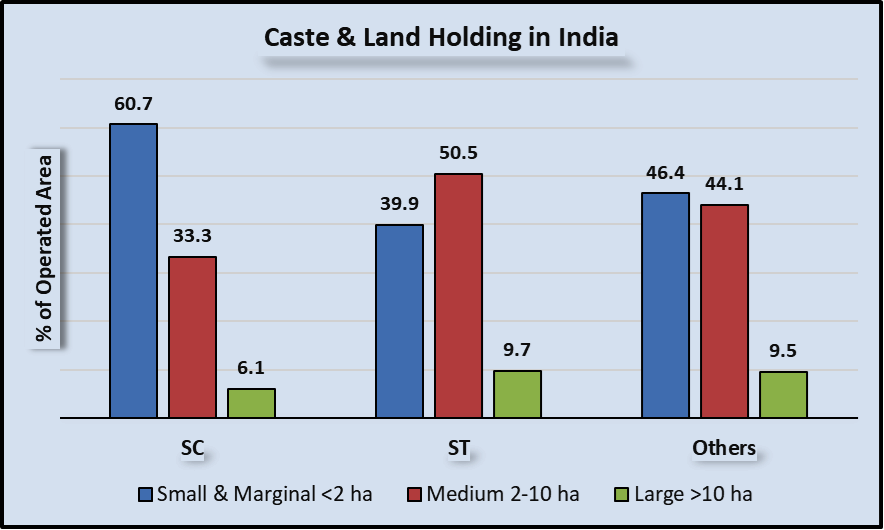
Of all the land owned by Dalits, nearly 61% is in holdings that are less than 2 hectares. These are usually described as marginal (less than 1 ha) and small (between 1 and 2 ha). Among Adivasis, this category of small and marginal farmers is about 40% while amongst ‘other’ communities it is over 46%.
Thus, not only do Dalits own less land than their share in population would demand, their land is much smaller in size forcing them into endemic economic distress. Medium sized farmers – those owning 2 to 10 ha – comprise of just a third of Dalit farmers while among the ‘other’ communities this proportion is 44% and among Adivasi communities it is over 50%.
What these results from the Agriculture Census show is that the ancient caste system continues to exercise a death-grip over the land distribution in the country, thus laying the foundation for almost universal oppression of and discrimination against Dalits and Adivasis. While land holding is not the only factor pushing these communities to the lowest depths of Indian society, it definitely is an important foundational reason.
The results also show that the airy-fairy talk about caste eroding or even disappearing from India is complete hocus-pocus, primarily invented by upper caste urban apologists. These survey results are from as recently as 2015-16. The varnashram fortress is still as strong as ever.
Get the latest reports & analysis with people's perspective on Protests, movements & deep analytical videos, discussions of the current affairs in your Telegram app. Subscribe to NewsClick's Telegram channel & get Real-Time updates on stories, as they get published on our website.









